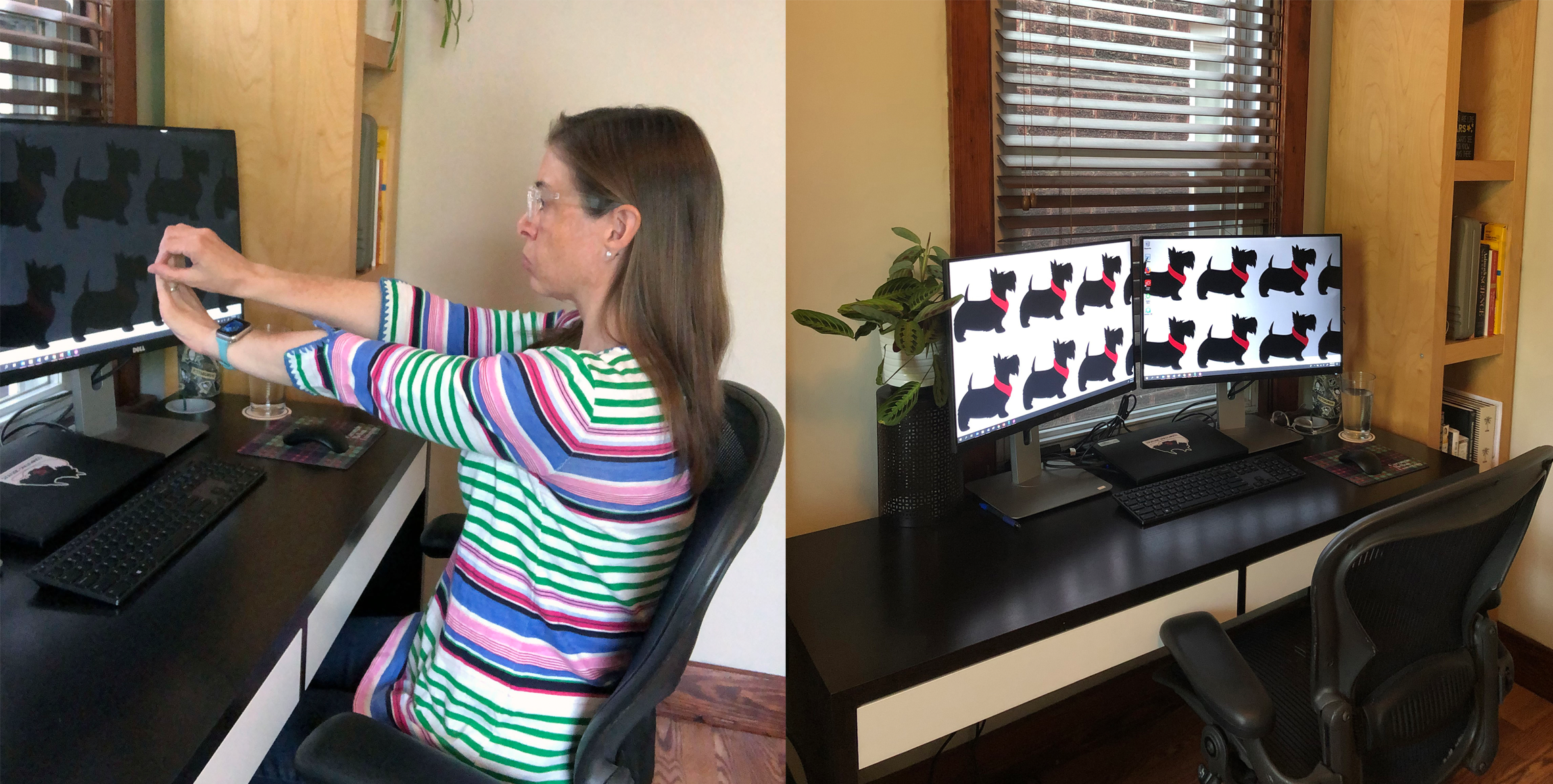Working from home can be challenging in many ways. One of the difficulties may be finding an appropriate work space and making sure it is safe and comfortable. Whether you have a dedicated office or your dining room table has become your new home office, there are safety tips to keep in mind to help make this one aspect of working from home easier.
Working from home should not be any less safe or comfortable than being in your office on campus. EHS is committed to helping you transition into work from home routines. Think through these considerations to stay safe, healthy and productive while working from home. If you have any questions and/or concerns, please contact EHS at safety@andrew.cmu.edu.
Electrical Safety
Transitioning to working from home may present new electrical safety concerns in your home that have
not existed before. Here are a few things you can do to prevent electrical hazards while working from
home:
- Avoid overloading outlets or power strips.
- Unplug appliances when not in use to save energy and minimize the risk of shock or fire.
- Use an approved UL power strip with at least 15A GFCI protection. Avoid using extension cords. HowStuffWorks provides good information for why this is important.
- Never plug a space heater or fan into an extension cord or power strip.
- Plug in smartly. Never run cords under rugs, carpets, doors or windows and make sure they do not
become tripping hazards. Regularly inspect electrical cords and extension cords for damage. - Keep papers and other potential combustibles at least three feet away from space heaters and other
heat sources. - Make sure your home has smoke alarms. Test them monthly, change batteries yearly and replace the
unit every 10 years.
Ergonomics
It is likely that you do not have the same type of workstation in your house as you do at the office. This
could present some ergonomic challenges that could lead to aches and pains. Follow these tips to help
make your workstation setup at home more ergonomic:
- Eliminate sources of glare behind the monitor and try not to face directly into a window.
- Keep your shoulders relaxed with your elbows at your side.
- Do not overreach for your keyboard or writing tools.
- Your elbows should be even with or slightly lower than your keyboard.
- When in a seated position, your hips should be level-to-slightly-higher than your knees.
- If your feet do not touch the floor, use a box or footrest to prop them up.
- If possible, use an external monitor, keyboard and mouse.
- Take regular stretch breaks throughout the day. The EHS website provides a few stretches you can do
at your work space.
In addition, your home office should assure that you can comfortably talk on a telephone, Zoom meeting or look at a computer screen knowing that privacy of sensitive or confidential discussions is maintained.

Injury Reporting
Injuries may happen while you are working from home and when the injury is directly related to the performance of your job, the event and injury should be reported.
For example, if you drop a box of work documents and injure your foot, this would be an injury that should be reported to your manager and HR.
To report an injury, complete the Supervisor's Injury/Illness Report.
(There is also a box on the Workplace Safety and Construction Page under Workplace Safety that you can copy.)
Self-Care
Having a good self-care strategy is key to protecting your sanity while staying home. Here are some self-care tips to follow while social distancing:
- Create and follow a daily routine - As much as possible, social distancing should not disrupt sleep-wake cycles, working hours and daily activities. While it might be tempting to not set the alarm clock or keep regular mealtimes, maintaining a regular schedule is crucial to supporting overall health.
- Keep moving - Set aside time to get up and move. Get outside (remember to wear a face covering) to take a stroll, a jog, walk the dog or ride a bike while maintaining a 6-foot distance from others. Stream a Group X-ercise class, use an app or clean the house when the weather does not permit outdoor activities. Whatever the activity, exercise can boost well-being by increasing blood flow and restoring energy.
- Connect - Although we cannot physically connect with others, there are a variety of tools that can be used to stay connected with each other. Social media platforms, phone calls and Zoom can help offset feelings of isolation.
- Disconnect - At least from the constant flow of news. Disconnect and use time to foster positive emotions and thoughts as much as possible, on your own or through the Headspace app.
- Be of service – Look for ways to help lessen the stress of those greatly affected by the virus by donating money to a local food pantry, purchasing gift cards to a favorite restaurant or small business while they are closed or bringing groceries to an elderly neighbor.
As reality takes hold, and social distancing becomes paramount, it is only natural to feel anxious and at a loss for how to adjust. But in these times, it is important, if not essential, to prioritize self-care.


